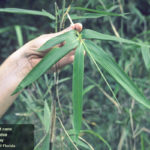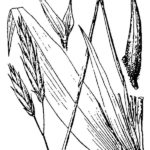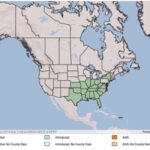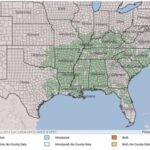Arundinaria gigantea
Illustration: USDA-NRCS PLANTS Database / Britton, N.L., and A. Brown. 1913. An illustrated flora of the northern United States, Canada and the British Possessions. 3 vols. Charles Scribner’s Sons, New York. Vol. 1: 295.
What is Giant Cane?
Physical Characteristics
Leaves:
- Short leaf stalks
- 2 sizes
Large Leaves:
- Located on main stem
- 4.72-7.88 inches long
- 0.39-1 inch wide
Small Leaves:
- Located on branches
Flowers:
- Few
- 2-3.16 inches long
- About 0.31 inches wide
- 9-13 flowers per spikelet
Stem:
- Hollow stems
- 6-24 feet tall
- 0.08-0.78 inches thick
Where Does it Grow?
USDA, NRCS. The PLANTS Database (http://plants.usda.gov). National Plant Data Team, Greensboro, NC 27401-4901 USA.
Giant Cane can be found in low areas near bayous and rivers.
Pros and Cons of Giant Cane
Submerged portions of all aquatic plants provide habitats for many micro and macro invertebrates. These invertebrates in turn are used as food by fish and other wildlife species (e.g. amphibians, reptiles, ducks, etc.). After aquatic plants die, their decomposition by bacteria and fungi provides food (called “detritus”) for many aquatic invertebrates.




